The Seductivness of the Interval - exhibition
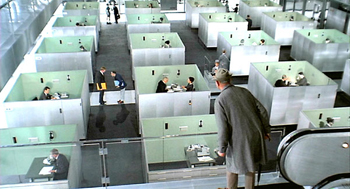 Location: The Romanian Pavilion - 53rd International Art Exhibition - La Biennale di Venezia, 2009; The Renaissance Society at The University of Chicago, 2010
Location: The Romanian Pavilion - 53rd International Art Exhibition - La Biennale di Venezia, 2009; The Renaissance Society at The University of Chicago, 2010
Exhibition area: 197 sqm Venice, 332 sqm Chicago
Artists: Stefan Constantinescu, Andrea Faciu, Ciprian Muresan
Commssioner: Monica Morariu (Ministry of Culture, Religious Affairs and National Heritage)
Curator: Alina Şerban, assistant curator: Livia Pancu
Exhibition Design: Alex Axinte, Cristi Borcan, collaborator - Livia Andreea Ivanovici, structural engeneer: Cristi Botoi
Project Manager: Mirela Duculescu
Stage design production: MOB HOUSE, Bucharest
Financed by: Ministry of Culture, Religious Affairs and National Heritage
In partnership with: Rumanska Kulturinstitutet, Instituto Romeno di Cultura e Ricerca Umanistica
The exhibition from 2010 from The Renaissance Society - University of Chicago constitutes a traveling version of the Venice project.
Supported by: The Renaissance Society at the University of Chicago, Romanian Cultural Institute - New York, Romanian Cultural Institute - Bucharest.
Details concept competition phase: http://www.studiobasar.ro/?p=965&lang=en
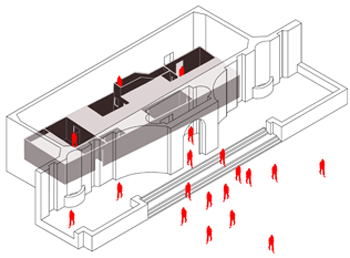
Curatorial concept:
“The project proceeds from an apparently simple observation: the artwork in an exhibition places the viewer in relation with a new reality. Once the original context of its production has been removed, the work becomes the stage for “performances” of an interpretative type, generated by an entire set of relationships (formal, aesthetic, social and emotional) between the vision of the author, the expectations of the viewer, and the particular circumstances of the encounter with the work. From this perspective, The Seductiveness of the Interval offers a reflection on the exhibition as an autonomous, semantically mobile spatial and temporal structure, marked by a new order, where the real and the fictional, nature and artifice, are treated together. Appropriating in their work elements of a narrative and theatrical nature, inspired by the world of theatre, film and literature artists Stefan Constantinescu, Andrea Faciu and Ciprian Muresan place spectatorship as key notion in connecting the reality of art to everyday reality. The field of concerns engaged by the particularities of their narratives relate to aspects of theatricalisation of quotidian relationships, the fictionalisation of history, violence and escape, the return to narrative. Dwelling upon the severance between what the artist places on stage as a “scenario” and what the spectator progressively discovers by traversing it in time, Stefan Constantinescu, Andrea Faciu and Ciprian Muresan engages in a “theatrical” mode of dialogue with the viewer (in the terms proposed by Michael Fried). Like the Artaudian schema, The Seductiveness of the Interval sets out to draw the subject into a new reality, not just as an observer, inviting him to identify a network of motivations, causal links between multiple passages, sequences and transitions presented in the exhibition, in order ultimately to ensure the coherence of the whole.” (Alina Serban)
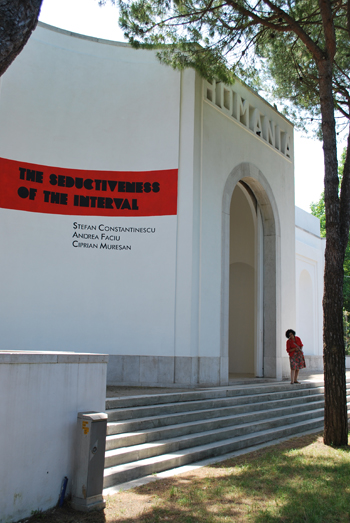 3 artists, 5 works - 4 video + 1 installation, 197 sqm exhibition hall; object surface 125 sqm, 2.65m height; 5 drawers, 9 intervals; 1 track
3 artists, 5 works - 4 video + 1 installation, 197 sqm exhibition hall; object surface 125 sqm, 2.65m height; 5 drawers, 9 intervals; 1 track
Venice 2009
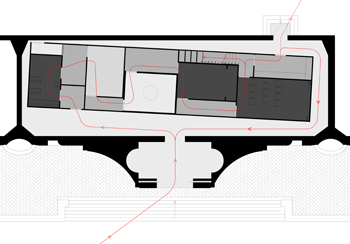 Spatial organization concept:
Spatial organization concept:
We cut out an object from the Romanian Pavilion’s building which fills the space and detaches the visitor from the outside world by its rotated position, the maze-like path and the peculiar materiality.
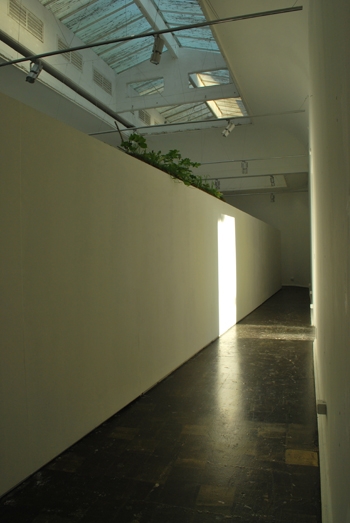 Being like inside a gigantic piece of furniture, the visitors are led through a sequence of drawers, each of the 5 drawers having the dimensions determined by its content (the artists’ works).
Being like inside a gigantic piece of furniture, the visitors are led through a sequence of drawers, each of the 5 drawers having the dimensions determined by its content (the artists’ works).

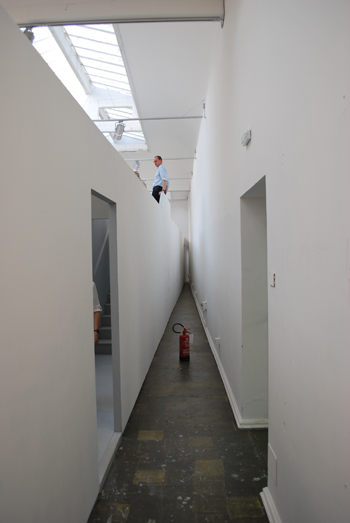 The drawers are included in the larger volume following an imperfect geometrical process, ‘with leftover’: the sum of the drawers’ dimensions being smaller than the dimension of the bigger ‘cabinet’, there are some surplus spaces, lost spaces, used as passages.
The drawers are included in the larger volume following an imperfect geometrical process, ‘with leftover’: the sum of the drawers’ dimensions being smaller than the dimension of the bigger ‘cabinet’, there are some surplus spaces, lost spaces, used as passages.
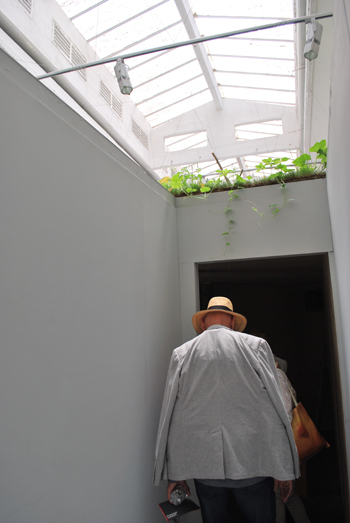
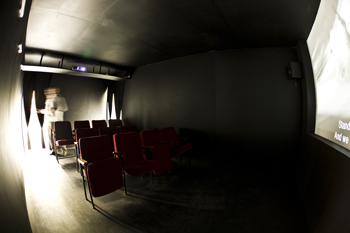 We endow with value this functional surplus, abolishing the modernistic hierarchy of the served spaces versus serving spaces: these intervals are not just transit spaces between 2 drawers, they are focusing zones, spaces of indeterminate superpositions, of expectations and waiting, of breathing and illumination, territories of equilibrium.
We endow with value this functional surplus, abolishing the modernistic hierarchy of the served spaces versus serving spaces: these intervals are not just transit spaces between 2 drawers, they are focusing zones, spaces of indeterminate superpositions, of expectations and waiting, of breathing and illumination, territories of equilibrium.
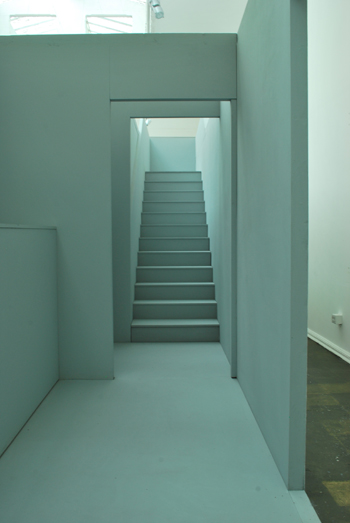 The object has a wooden structure clad in MDF panels painted in black, white and grey, this setup emphasizing the sensation of detachment from the real through the prevailing color code, the smell of the wooden structure and the sound of the steps on the wooden floor.
The object has a wooden structure clad in MDF panels painted in black, white and grey, this setup emphasizing the sensation of detachment from the real through the prevailing color code, the smell of the wooden structure and the sound of the steps on the wooden floor.
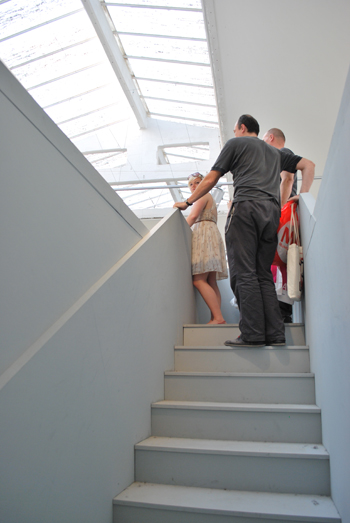
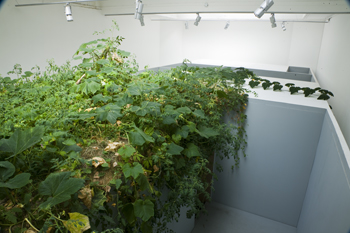 Chicago 2010:
Chicago 2010:
When we imagined a spatial structure that contains the artists’ work, we related this object to the spatial logic of The Romanian Pavilion from Giardini in Venice.
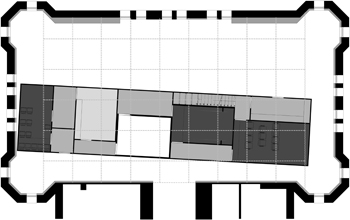 The May 2010 reconstruction from The Rennaisance Society, a second life of the exhibition in a way, was possible in a space related to The Romanian Pavilion in terms of dimensions, but not quite identical, the outcome being a new reality of the interior path and a new relation between the host gallery and the exhibition structure, a reality slightly modified and refreshed.
The May 2010 reconstruction from The Rennaisance Society, a second life of the exhibition in a way, was possible in a space related to The Romanian Pavilion in terms of dimensions, but not quite identical, the outcome being a new reality of the interior path and a new relation between the host gallery and the exhibition structure, a reality slightly modified and refreshed.
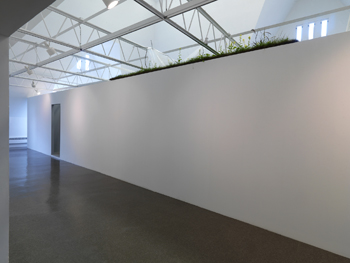
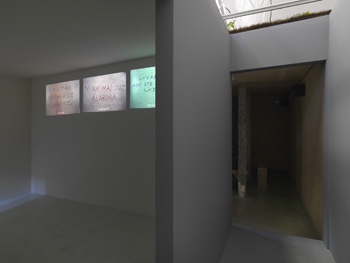 The two spaces have the same length, the same central access, the difference being the depth and the height: the Romanian Pavilion in Venice is narrow and high, with a skylight above, while the University of Chicago gallery has a double depth in plan and a technical iron lattice grid 2.8m above the floor.
The two spaces have the same length, the same central access, the difference being the depth and the height: the Romanian Pavilion in Venice is narrow and high, with a skylight above, while the University of Chicago gallery has a double depth in plan and a technical iron lattice grid 2.8m above the floor.
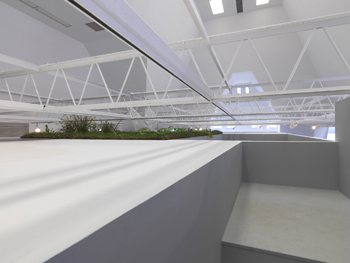 These trusses are the signature of the American gallery, and the visitor has a strong sensation of ‘backstage escape’ when he reaches the suspended platform of the structure and he is right between this lattice iron grid. Another difference is that the Chicago gallery is in the attic of the University and the walls are perforated by 21 windows with a wide perspective over the campus, while in Venice the space visually communicates with the exterior through the main access and the back service door.
These trusses are the signature of the American gallery, and the visitor has a strong sensation of ‘backstage escape’ when he reaches the suspended platform of the structure and he is right between this lattice iron grid. Another difference is that the Chicago gallery is in the attic of the University and the walls are perforated by 21 windows with a wide perspective over the campus, while in Venice the space visually communicates with the exterior through the main access and the back service door.
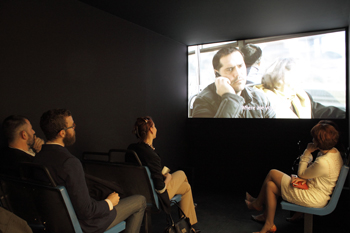
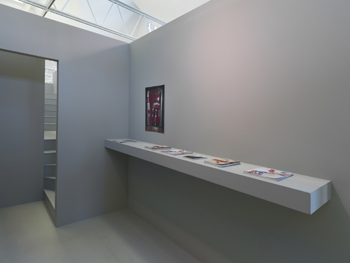 Thus, if in Venice the structure interacted vertically with the space, in Chicago the dialogue was rather horizontal. If in Venice the breathing and the final illumination came once one was ascending the stairs towards the garden and the light, in Chicago the reflection and the perception of the entire object were the final key of the viewer’s path.
Thus, if in Venice the structure interacted vertically with the space, in Chicago the dialogue was rather horizontal. If in Venice the breathing and the final illumination came once one was ascending the stairs towards the garden and the light, in Chicago the reflection and the perception of the entire object were the final key of the viewer’s path.
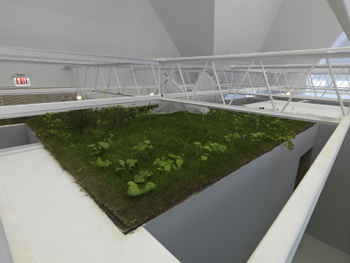 Photo by: Arnold Esteban, Tom Van Eynde © The Renaissance Society at The University of Chicago, Catalin Rulea, Dan Vezentan, studioBASAR
Photo by: Arnold Esteban, Tom Van Eynde © The Renaissance Society at The University of Chicago, Catalin Rulea, Dan Vezentan, studioBASAR
http://www.seductiveness-of-interval.ro/
http://issuu.com/eroik/docs/the_seductiveness_of_the_interval_catalog_2